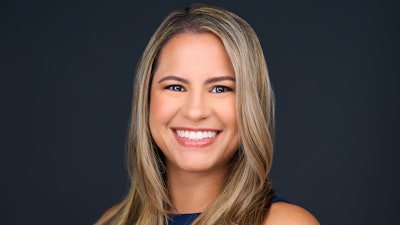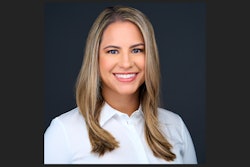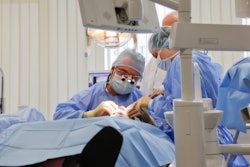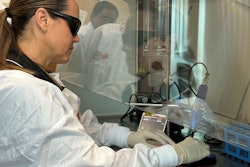
When dental practices fail to receive payment on claims, they contact billing experts for advice.
For example, here is a question submitted by a dentist whose claim for an alveoloplasty was denied by an insurer:
"Dear Billers, I performed an alveoloplasty (D7310) with an extraction, and the claim was denied by the insurance plan because the 'claim failed the ADA Code validation.' What does that mean, and how can I get this claim paid?"
The question is simple, but the answer is complex. Failing an ADA code validation means that a dental procedure or service has been reported with an incorrect or invalid code, which can lead to claim denials, payment delays, or audits.
To ensure that you have coded the claim correctly, consider the following:
- What exactly was performed clinically after the extraction? You must perform the actions listed in the code language.
- What was written down that recorded the clinical procedure?
- Was the procedure reported to demonstrate that code D7310 -- Alveoloplasty was performed in conjunction with extractions of four or more teeth or tooth spaces per quadrant according to the coding language?
- Were intraoral images taken during and after the extraction to support using the D7310 code?
The ADA code language for D7310 states that an alveoloplasty “is a separate and distinct procedure from extractions.” It is not part of the extraction procedure. It is performed in preparation for a prosthesis or in conjunction with other treatments, such as radiation therapy and transplant surgery. An alveoloplasty is typically performed with multiple adjacent extractions only.
For an alveoloplasty performed not in conjunction with extractions of four or more teeth, or tooth spaces, see code D7320. For one to three teeth or tooth spaces per quadrant, D7311, alveoloplasty in conjunction with extractions is the code to use.
Extraction Current Dental Terminology (CDT) code language now includes "minor smoothing of socket bone." The smoothing will be considered inclusive of the extraction code. To code D7310 or D7311, your clinical notes must explain why extensive alveoloplasty is necessary (such as to prepare the area for a bridge, denture, radiation, and transplant).
During the treatment plan stage, verifying the patient's eligibility, benefits, and plan limitations is necessary before treatment. Alveoloplasty services are paid at variable rates by payers or not at all, and the patient must be informed.
Many insurance plans want to see whether the procedure was “medically necessary” as supported by the clinical notes in the patient’s record. The ADA defines medically necessary care as: “The reasonable and appropriate diagnosis, treatment and follow-up care as determined and prescribed by qualified appropriate health care providers in treating any condition, illness, disease, injury, or birth developmental malformations. Care is medically necessary for controlling or eliminating infection, pain, and disease, and restoring facial configuration or function necessary for speech, swallowing or chewing."
Alveoloplasty is medically necessary, as per the ADA, when any of the following conditions are met:
- When removal or reshaping of irregular alveolar bone is necessary for appropriate fitting of a prosthetic device
- When removal or reshaping of irregular alveolar bone is necessary to prepare for radiation therapy or transplant surgery
- When it is necessary to remove alveolar bone arising from a pathologic condition
- When it is necessary to provide stability for dental implant placement if implants are covered benefits under state-specific regulations
After you have corrected your coding, clinically documented, and acquired the supporting radiographs and photos to support the claim, you must still understand how the particular plan will view your claim. The code may not be listed as a covered expense on the plan, or it may have severe limitations.
Limitations
- The claim must include and support the medical need for the alveoloplasty if performed on the same date as the extraction(s). If four adjacent teeth are extracted on the same date, there may be coverage for the D7310 (document clearly).
- Having an alveoloplasty as a routine part of the extraction procedure is improper.
Narratives and clinical notes
Clinical notes are sometimes preferred over a brief narrative and are necessary for this claim. Photos of the treatment area before, during, and post-treatment serve as superior documentation, as does a pretreatment radiographic image.
Summary
By using the correct ADA code for each dental procedure or service, dentists can avoid ADA code validation rejections and ensure proper claim processing and payment. Moreover, using the correct ADA code can also improve the quality of care and patient satisfaction by providing precise and consistent information about the dental treatment provided.
Reference
Oral Health Topics. American Dental Association. Accessed January 23, 2024. https://www.ada.org/resources/research/science-and-research-institute/oral-health-topics.
Estela Vargas, CRDH, is the founder and CEO of Remote Sourcing, a dental insurance billing and revenue recovery service. She is a graduate of Miami Dade College's dental hygiene program. Vargas' extensive background in the clinical arena of dentistry is coupled with her experience as a practice administrator and business executive.
The comments and observations expressed herein do not necessarily reflect the opinions of DrBicuspid.com, nor should they be construed as an endorsement or admonishment of any particular idea, vendor, or organization.



















